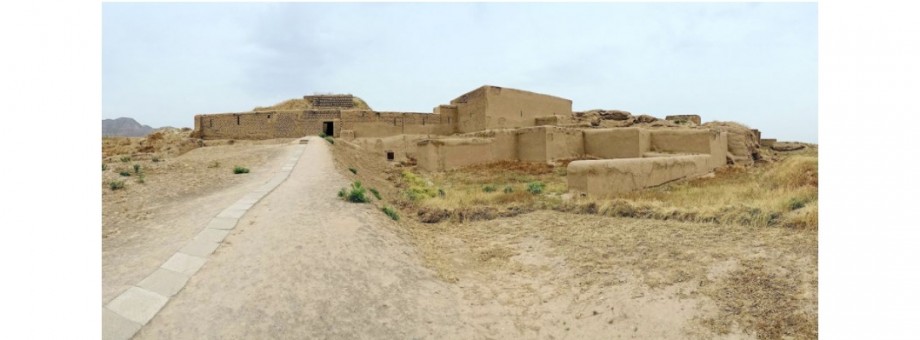MAJESTIC REMAINS OF A SPLENDID CITY

At the foot of Kopetdag, 18 kilometers westwards of Ashgabat, the remains of the city of Nisa − arose during the ancient Parthian state. About the royal fortress, located on a hill, it was fixed the definition – Old Nisa, and about the city in the valley − the New one.
New Nisa is identified with the city of Nisa, which is mentioned in historical sources as the center of the region of the same name and existed until the beginning of the 19th century.
The first excavations in Nisa were initiated by General Alexander Vissarionovich Komarov, appointed in 1883 as the head of the Transcaspian region. At the end of the 19th and at the beginning of the 20th century, famous archaeologists Vasily Vladimirovich Bartold and Valentin Alekseevich Zhukovsky visited Nisa. But for the first time, the Turkmen archaeologist Alexander Alexandrovich Marushchenko spoke about Nisa as the residence of the Parthian kings.
Old Nisa is a pentagonal fortress, the walls of which are 8-9 meters thick at the base. Around the second century BC, there were built defensive structures here from mud bricks and broken clay, in the center – large reservoirs and a group of monumental ceremonial buildings.
After that, a group of buildings with facades facing the courtyard was erected on an area of about 2.5 hectares. The main objects of the development, called the Square Hall, Round Temple and Square House, were richly decorated with clay sculptures and wall paintings, mainly containing battle scenes.
Among the findings made in Old Nisa, there are about three thousand ostracons, representing Parthian documents from the economic archive. The text on the ostracons is written with a brush, by black paint. After deciphering the texts on the shards, scientists received important information about the history and culture of Parthia. In particular, it turned out the name of a number of settlements, including the Parthian name of Old Nisa – Mihridatkirt Fortress, a lot of names and job titles of local officials.
In the Square House, which most researchers define as a treasury, the world-famous ivory rhytons were found. Marble sculptures, coins and a number of other valuable items were also discovered here.
In the first century AD, the complex on the hill ceased to be used. It was abandoned for a long time and was finally destroyed by one of the earthquakes that occurred between the thirteenth and fifteenth centuries.
New Nisa as a city had already existed in the first millennium BC. References to the city are found in the works of many ancient authors. The process of intensive development of Nisa had begun since the 3rd century BC.
According to medieval authors, after the city became an important center of the Parthian state, many manors with gardens and vineyards appeared in its suburbs; like modern Bagir, Nisa was surrounded by greenery.
In the Middle Ages, Nisa became the main city of the region of the same name, which the Arab geographers of the tenth century call the Granary of Khorasan. Grain crops amounted one of its main wealth. Many vegetable gardens were laid out near the city and villages; especially the Nisa eggplants were famous.
Handicraft production has been developed in the city. Ceramic products, such as bowls, dishes and jugs, as well as multi-colored glass vessels made here, were used mainly as containers for perfumes and medicines, were in demand far beyond the region.
During its centuries-old history, Nisa hosted the first caravans of the Silk Road, and promoted the development of trade and cultural ties between East and West. The city lived out the era of the Khorezmshahs, the invasion of the Mongols and Timurids, and after the ruler of Khorasan, Muhammad Veli-Mirza plundered the local lands in 1809, surviving residents of the city moved to Bagir.
Now both settlements form the core of the State Historical and Cultural Reserve Nisa.
Roman Teplyakov


 NEWS
NEWS